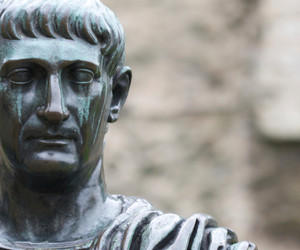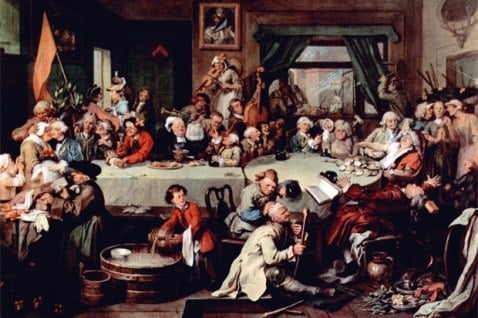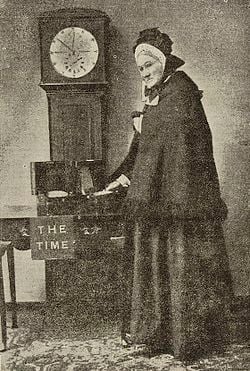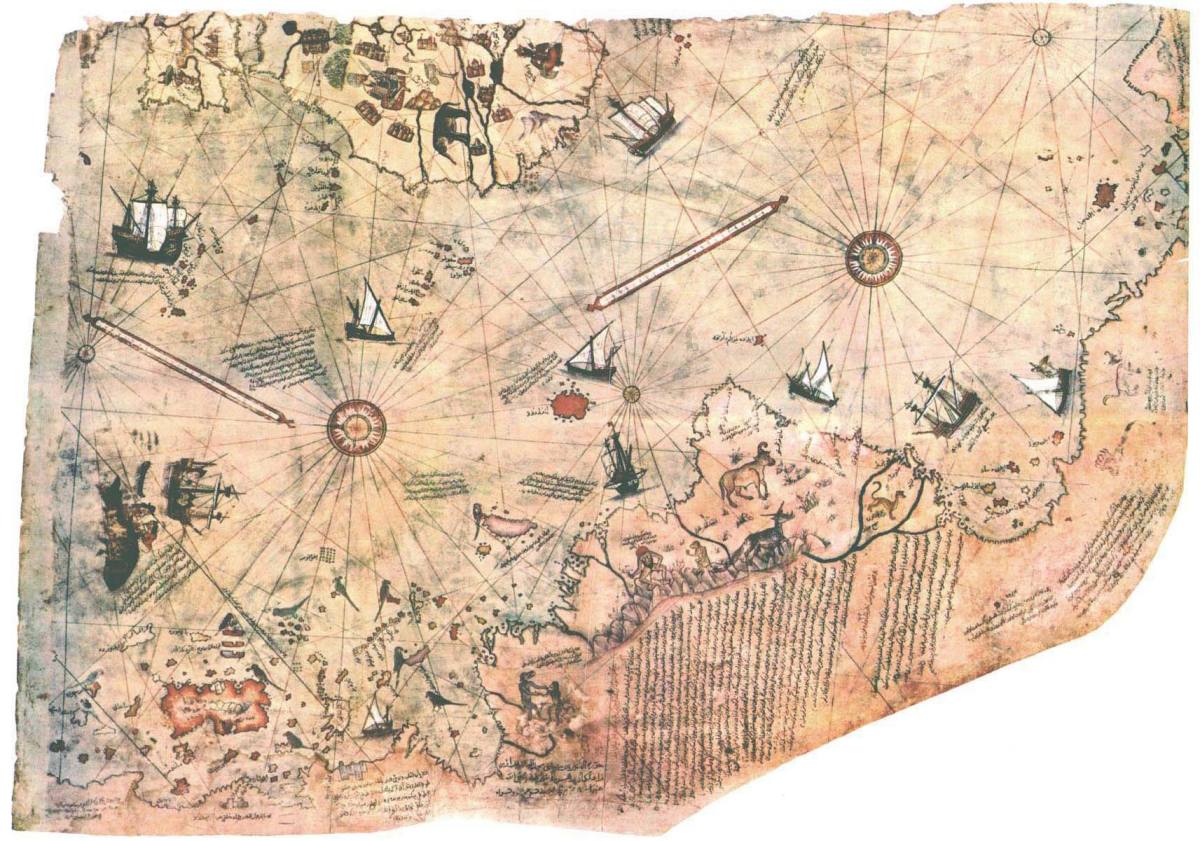How the Grinch Stole September
Once upon a time
there lived a people far in the north where the air was cold and the sun shown infrequently. The people of the south who controlled all the lands were looking for a way to tax the people of the north, but as these latter enjoyed very little sunlight and had to endure a very short growing season, the southern people, especially in those old days when all people had difficulty in measuring the sun, had no easy way to tax the northern tribe.
Then one day,
a soothsayer from the South, named Pricillos (with a soft ç) had a great idea! He suggested to the King of the South, to tax the moonlight in bites measuring ¼, ½, ¾, and 1 whole. The King was ecstatic! He immediately introduced this plan and opened a bank account called “moonlighting.”
This plan worked for hundreds of years until a new King’s accountant discovered a whole month had gone missing every two years in between February 23th and 24th, which added up to a considerable amount of tax money. So the King summoned a great astronomer from his brother’s court, named Sausiges (pronounced “Sauce-eh-jeez”) to find a way to correct the tax code.

Sausiges locked himself
in the library and quickly went to work. After three months he solved the puzzle. He recommended to the King to abandon taxing the moon in favour of the sun which was much more abundant and easier to measure with smaller units using a circular device bearing a wedge that cast a shadow.
This device permitted the King to tax all the people, even his own, by the day (called per diem) instead of by the moons, raising much more money than previously imaginable which then was deposited in a new account called a Daylight Savings Account. Further, this brilliant astronomer, Sausiges, found a way to get back the lost 90 days --- or three months --- from the previous lunar tax code.
The King was again ecstatic! had a new measuring tool that could help raise much more money and he had gotten back his “lost nights.”
“Why indeed!” barked Exigesus. “My mechanism can divide days into units called hours, and then divide these hours into smaller units called minutes.”
However, after some time,
a new astronomer came visiting from a distant land, even beyond the King’s brother’s kingdom… I believe his name was Exigesus (don’t ask me how to pronounce it) and he had a new measuring tool that could fit into his purse and carry with him on his travels. This new tool so amazed the townspeople, that Exigesus, was soon summoned to appear before the King. The King asked Exigesus if this new tool measured sunlight in units shorter than a day.
The King was highly impressed.
He saw great potential for making even more money. He quickly hired this new astronomer to write a new tax code --- retroactive to about 200 years earlier and hired a big burly Grinch to go down to the people with a 5 inch thick tax code in hand.
You could only imagine, dear reader, how angry the people became. They refused to believe in this new hand held tax code and measuring tool… And furthermore, they revolted by running Exigesus out of town and smashing the town’s ‘device with the wedge that cast a shadow’ where everyone could see as clear as day what time of day it was without being fooled.

Well now, without that big “sundial”
as it later came to be called, the King’s accountants could not keep track of the hours, only the days, but as this event coincided with a great eclipse, called a leap year, even the days got lost for a while.
For how long? Nobody knows. Because the people of different lands had different ways of counting them from earlier times. Some counted on their fingers; some on their toes; some by the moons, some by the planets and some by the stars. Likewise with the accountants, who were long overdue for a vacation : they all started to disagree with each other, and soon nobody knew what year it was anymore. It seemed as if Time had stopped.
Then when the sun resurfaced, nobody except the King had any interest in re-starting Time, so this became known in history a the year zero, written as: ‘0’.
We said ‘in history’
because indeed both time and taxes started again. How did this come about? You ask…
Well you see…the King’s son, or the new King had the ‘sundial’ rebuilt --- this time with a newfangled internal calibrator that could keep time even at night and under cloudy skies which enabled him to introduce double taxation by measuring both the daylight and the moonlight. And he asked his father’s astronomer to make a new tax code beginning with year One again; that is, as soon as his accountants could be brought back from their vacations on the seaside. At first the people resisted this code arguing that it could not be decided where and when year ‘One’ could take place, since out of nothing (including the timeless) nothing comes. And even if it could come out of nothing, the doubling of time into two ‘samples’ of every year --- one before and one after the zero --- would so confuse the historians and the history of the race would get so scrambled that it would end up discarded --- first by the teachers and their school children and then by all the adults.
So visceral was this resistance, that nobody knows just how long this timeless period lasted. The King ended it only by hiring Zero Môtel, the greatest mathematician in the world as it was then known, to write a technical manual explaining these puzzles, which was too voluminous to intercalate here, but has been linked to this article under the title “The Waste of Daylight.”
As it was,
the people were finally convinced by Zero’s false arguments that purported to show that they would pay less using a more exacting solar system of taxation --- at least for 1, 500 years. After that, they realized that the King of that time, who was then called a Pope --- which means “father” --- had been jipping them with new sophistries from foreign thinkers who had hidden agendas. So they smashed the new town ‘clock’ with the internal mechanism --- as it came to be called --- and went back to the sundial which they took out of the museum where the Pope had put a replica on display for the visiting dignitaries.
This did not deter the Pope, however. He then built a new improved mechanical clock that could also count eclipses and sent a bigger meaner Grinch with a thicker tax code accompanied by soldiers. This time the Pope and his Grinch knew exactly how many days had eclipsed from the calendar and decided, instead of adding taxable time, to remove time altogether causing the calendar to jump from October 5th to October 14th, skipping 10 days.

At first the people thought
they had won their struggle against the Pope, but after they realized that they had lost 10 days of salary and that the November rent was due 10 days earlier they were furious. They pleaded with the Pope to give them back their 10 days. The Pope agreed but only on the condition that by using the new clock he could add a taxable leap year every four years to the calendar.
Again the people were placated for about 200 years… Until another eclipse caused the disappearance of 11 days from September 2nd to September 14th creating the same problem again with salaries and rents. The new Pope, now called a Bismark, pressured the people into adding another taxable leap year every four hundred years which could now be measured with an even greater mechanical clock and whose taxes could be collected with a meaner Grinch. And as this seemed so far away in the future as to be immaterial to the people, they agreed even to losing the 11 days.

And this is the story of how the Grinch stole September and invented Mean Greenwich Time.








